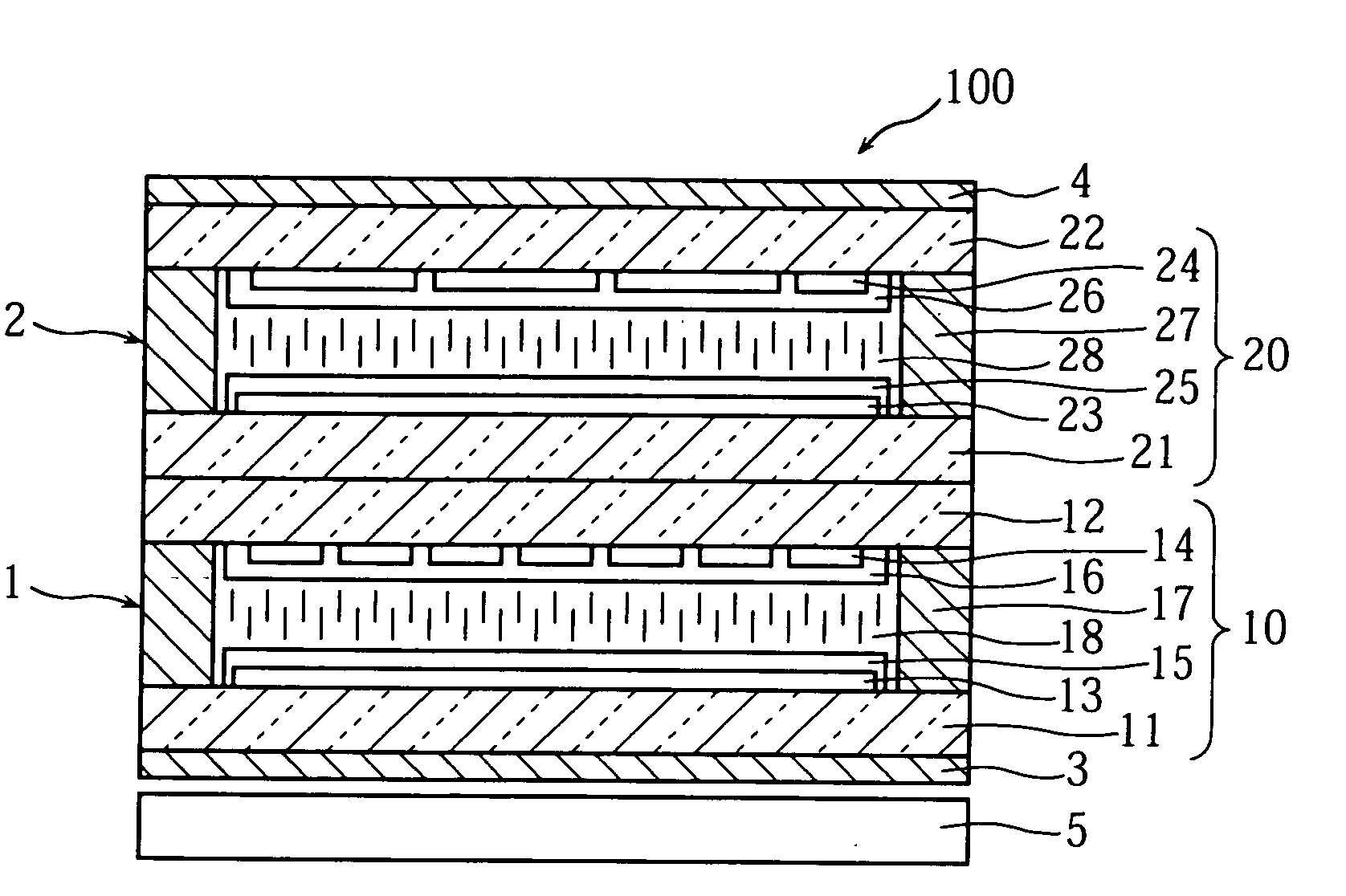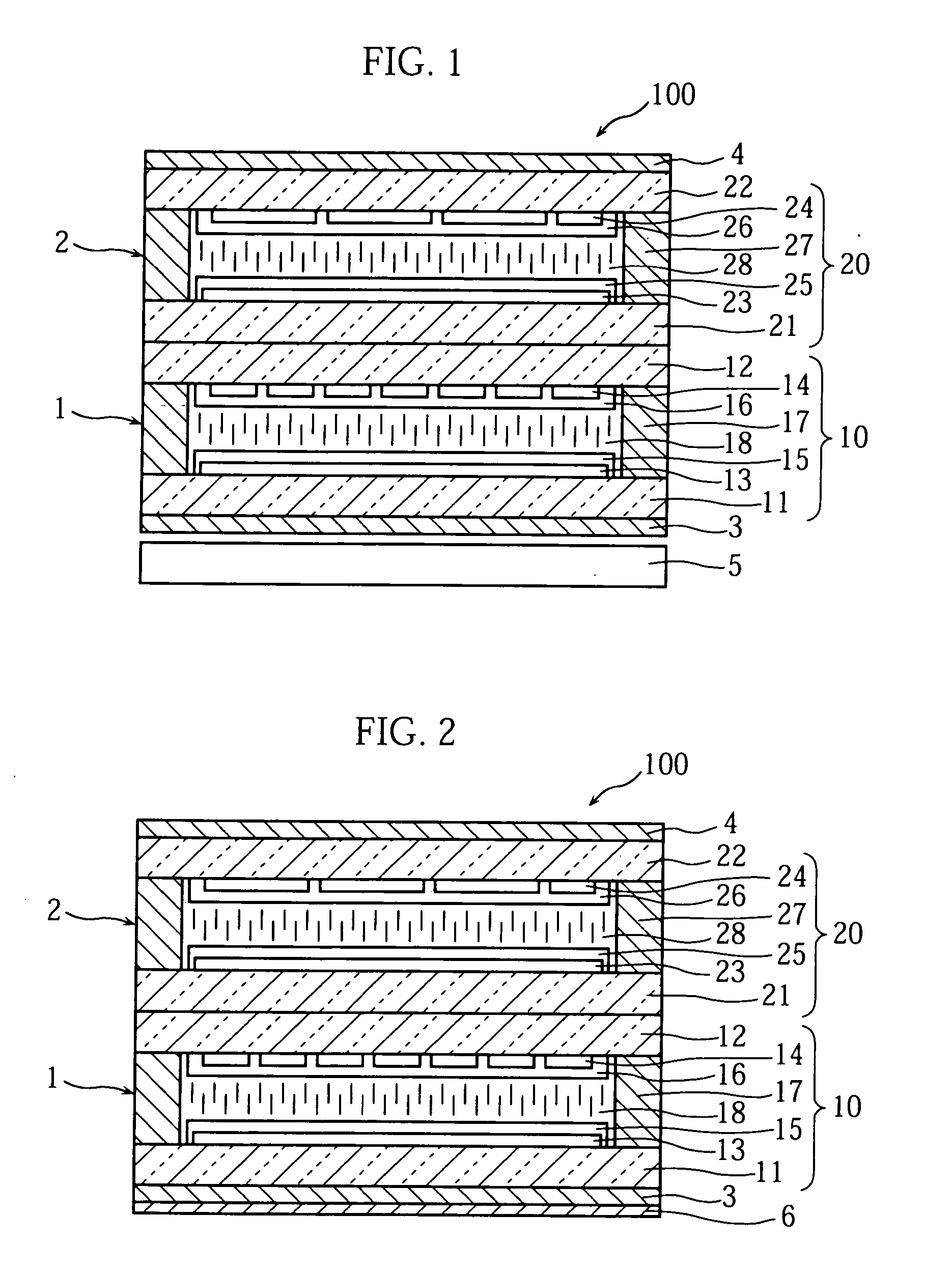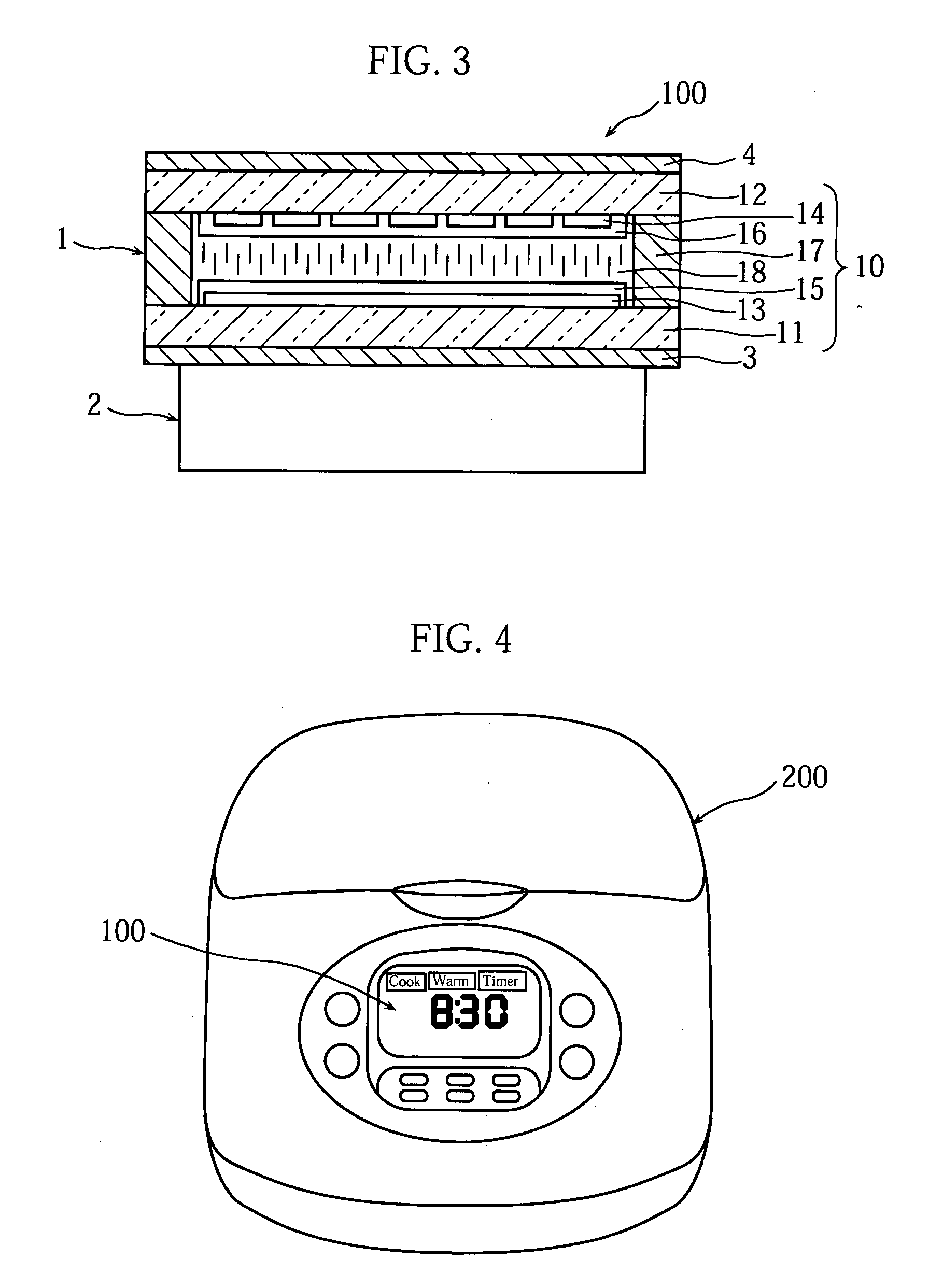Composite display unit and electric apparatus using this
a technology of display unit and electric apparatus, applied in the field of composite display unit, can solve the problems of large electrical power consumption, severe attenuation of light, intense cell consumption, etc., and achieve the effect of conserving spa
- Summary
- Abstract
- Description
- Claims
- Application Information
AI Technical Summary
Benefits of technology
Problems solved by technology
Method used
Image
Examples
first embodiment
[0025]FIG. 1 shows the composite display unit of the present invention. As shown in FIG. 1, the composite display unit 100 is provided by over lapping the first display element 1 and second display element 2. The first display element 1 is constituted comprising a liquid crystal panel 10 in which a liquid crystal layer 18 is held between first and second transparent substrates 11 and 12 respectively, a reflective polarization plate 3 that is provided on the side of the first transparent substrate 11 and a polarization plate 4 that is provided on the side of the second display element 2. In the example shown in FIG. 1, the reflective polarization plate 3 and polarization plate 4 are common to the first display element 1 and the second display element 2. This reflective polarization plate 3 is characterized in that same transmits light that oscillates in a specified direction and reflects light that oscillates in a direction intersecting with the specified direction and is joined dire...
third embodiment
[0048]FIG. 3 shows the composite display unit 100 of the present invention. In this embodiment, the first display element 1, which is rendered by providing the reflective polarization plate 3 and polarization plate 4 on both sides of the liquid crystal panel 10 with the same constitution as that mentioned earlier is constituted to overlap the second display element 2. In addition to it being possible for the second display element 2 to employ a liquid crystal display element that is produced by providing a polarization plate on both sides of the liquid crystal panel 20 in which a liquid crystal layer is held between two transparent substrates that is the same as the second display element 2, for example, it is also possible to combine a display element that is constituted by lining up light-emitting diodes (LED) in the form of a matrix or a display element that is constituted by arranging cold cathode tubes, with the existing display element.
[0049] So to in this constitution, if TN ...
PUM
| Property | Measurement | Unit |
|---|---|---|
| refractive index | aaaaa | aaaaa |
| twist angle | aaaaa | aaaaa |
| transparent | aaaaa | aaaaa |
Abstract
Description
Claims
Application Information
 Login to View More
Login to View More - R&D
- Intellectual Property
- Life Sciences
- Materials
- Tech Scout
- Unparalleled Data Quality
- Higher Quality Content
- 60% Fewer Hallucinations
Browse by: Latest US Patents, China's latest patents, Technical Efficacy Thesaurus, Application Domain, Technology Topic, Popular Technical Reports.
© 2025 PatSnap. All rights reserved.Legal|Privacy policy|Modern Slavery Act Transparency Statement|Sitemap|About US| Contact US: help@patsnap.com



